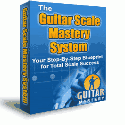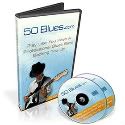Your guitar will certainly give you more consistent quality sound along with a much longer life span if the correct care and attention is provided. Purchasing some accessories that are essential for the care of your guitar is vital if you are serious about playing the guitar. There is a well known saying that is certainly true, and that is "a guitar player is only as good as the sound and quality of the guitar he is playing".
A hard shell case is the first item which should be purchased, in order to ensure the safety of your guitar during transportation to and from different locations, where you will be playing your guitar. A soft or cloth "gig bag" is something which many people use for their guitar, these bags zip up and offer protection to the exterior surface of the guitar. The only problem with this type of bag, is that during transportation, the tuning nuts on the end of the guitar neck can move which results in the guitar becoming out of tune, as there is nothing to protect them from being bumped.
Cracks and actual punctures can also happen to the guitar when using a gig bag, if there is any kind of impact when loading and unloading the guitar. Whereas a hard shell case will in actual fact prevent this from occurring as there is sufficient space between the neck and body of the guitar and the case. The case is designed to take impact whilst keeping the guitar secure on the inside and keeping it in tune. A hard shell case is a more expensive than a gig bag, however that little extra investment will provide your guitar with better protection.
A guitar stand is another item which should be purchased for the care of your guitar. The guitar should always be rested on a stand when not being played. Many people choose to lean a guitar against a wall or a couch when not in use, however, this is not suitable. If the guitar is not stored in the correct manner, or not placed on a guitar stand, then the neck of the guitar can become warped, which will make it more difficult to play.
It is necessary to apply more force to the strings when playing the guitar if it is warped, as the neck increases the distance between the strings and the neck. This can result in very sore and blistered fingers, which is absolutely unnecessary. By possessing a guitar stand, the guitar can be kept in the same location when it is not in use and also prevent accidents.
A tuning device is the final item which should be purchased. You will become better at tuning your guitar the longer that you play simply by using your ear. However to begin with, you will need something that informs you of the exact sound and accurate tuning. Many of the tuners are very simple to use. It can be very embarrassing when your guitar is not tuned correctly, especially if you are playing to an audience and singing at the same time.
Kevin Sinclair is the publisher and editor of MusicianHome.com, a site that provides information and articles for musicians at all stages of their development.
Article Source: http://EzineArticles.com/?expert=Kevin_Sinclair






















